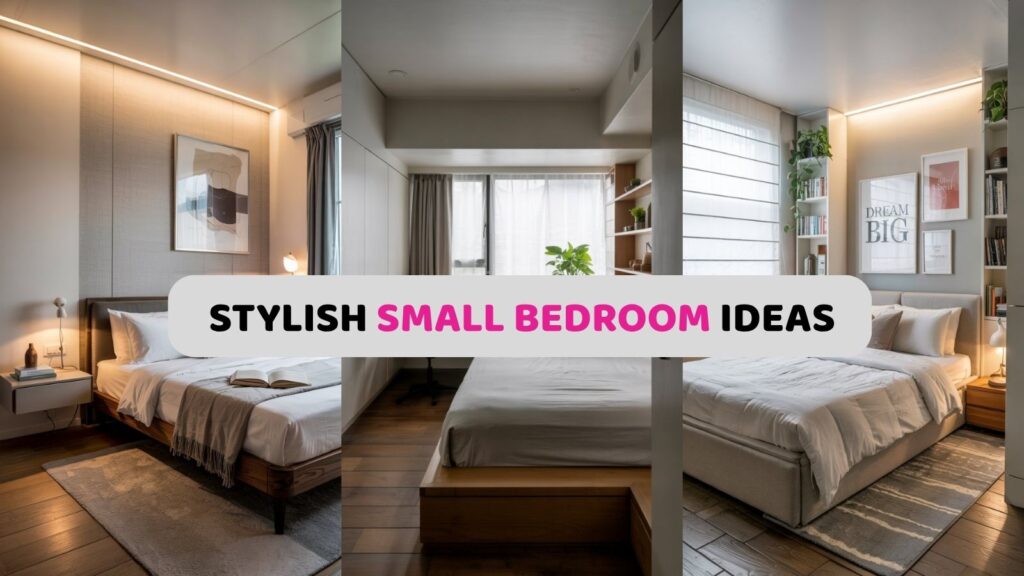Living with a small bedroom doesn’t mean you have to live small. In fact, it just means you’ve got a cozy little design challenge with big potential! I’ve been there—trying to make a tiny room feel stylish, functional, and not like a shoebox. So today, I’m sharing some of my favorite small bedroom ideas that help you maximize every inch without compromising on charm.
Small Bedroom Ideas
Living in a small bedroom doesn’t mean sacrificing style or comfort. You just need clever solutions. Maximizing vertical space and choosing multifunctional furniture can unlock hidden potential in your room. Light colors and thoughtful decor keep your space feeling open and inviting. With the right tweaks, even the smallest room feels spacious and personal.
Maximize Vertical Space

When floor space is limited, the best place to look is up. Your walls can be a goldmine of opportunity when it comes to storage and decor. Installing tall shelving units or wall-mounted bookshelves gives you a place to display your favorite books, plants, or framed photos while freeing up surface areas. If you have a high ceiling, consider stacking storage vertically, or using floating shelves above your headboard.
You could even mount nightstands or lights on the wall instead of placing them on the floor. The more you take things off the ground, the more open your room will feel.
Tip: Don’t forget about the area above your closet or doorway, which is often overlooked but perfect for extra baskets or bins.
Choose Multi-Functional Furniture
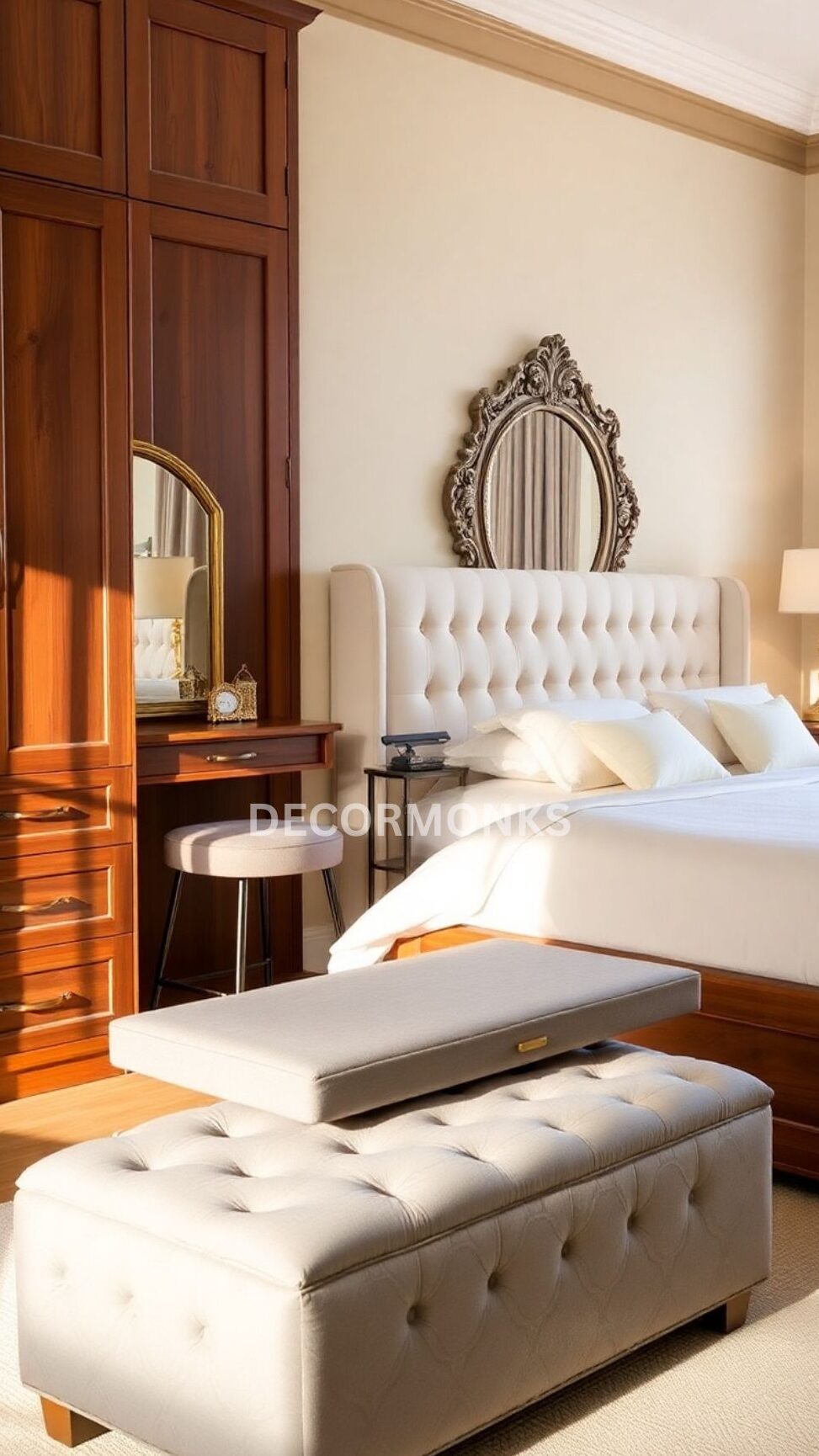
Every piece of furniture in a small room should earn its place. That’s why choosing items that serve more than one purpose can make a world of difference. Think about a bed that also has built-in drawers or a lift-up mattress for under-bed storage. If you need a workspace, a compact desk that doubles as a vanity or nightstand can help you avoid crowding the room with separate pieces.
Ottomans with hidden storage or benches at the foot of the bed can store your linens while offering additional seating.
Even headboards can work harder—some come with built-in shelves or compartments for books and accessories. By picking double-duty pieces, you’ll save space and keep your room feeling organized.
Embrace Light Colors and Simple Palettes
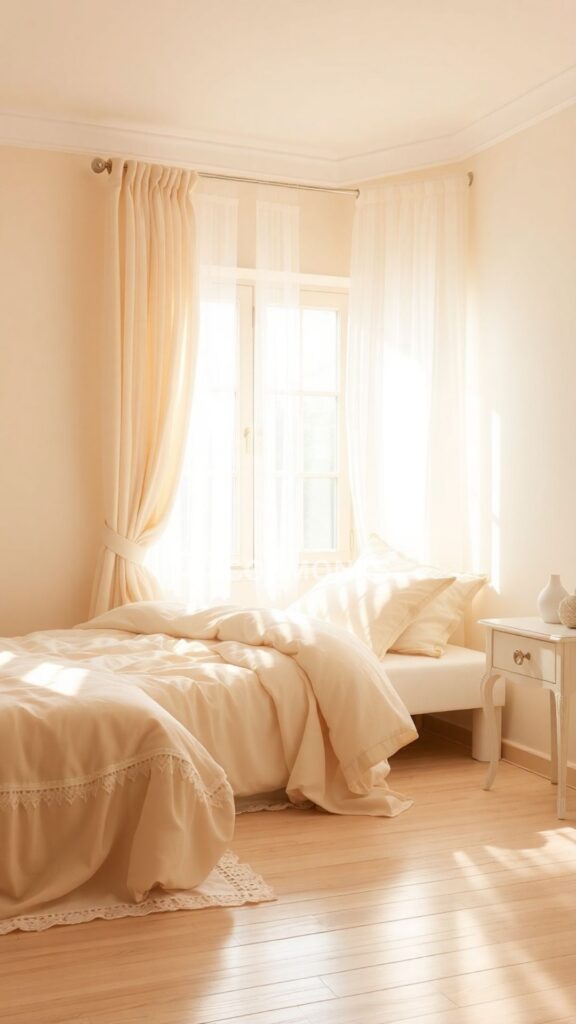
One of the easiest ways to make a small room feel larger is by using light, neutral tones. White, cream, pale gray, or soft pastels help reflect natural light and give your room an airy, spacious feel. If your walls are painted a dark or bold color, it might be worth switching to a lighter shade to see an instant visual difference.
That doesn’t mean your room has to be boring. You can add texture and interest through layered textiles like woven rugs, linen bedding, and cozy throws.
Just try to stick to a limited color palette so the room doesn’t feel too visually busy. The goal is to keep things cohesive and calming, especially in a space meant for rest.
Use Mirrors to Reflect Light and Space
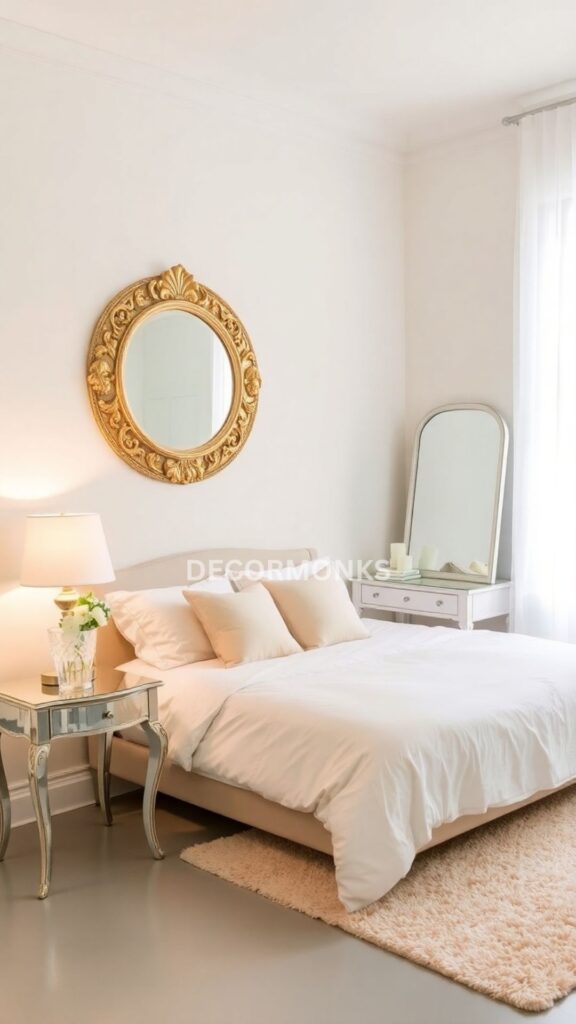
Mirrors are one of the oldest tricks in the interior design playbook—and for good reason. When placed strategically, a mirror can make your small bedroom feel twice as big. Hang one large mirror on a focal wall or use several smaller ones to bounce light around the room and create depth.
You could go with a floor-length mirror leaning against the wall, which not only makes a stylish statement but also serves a practical purpose. Another great option is to choose furniture that incorporates mirrored surfaces, like a vanity or dresser. The added reflectivity keeps things feeling open and bright.
Rethink Your Bed Placement
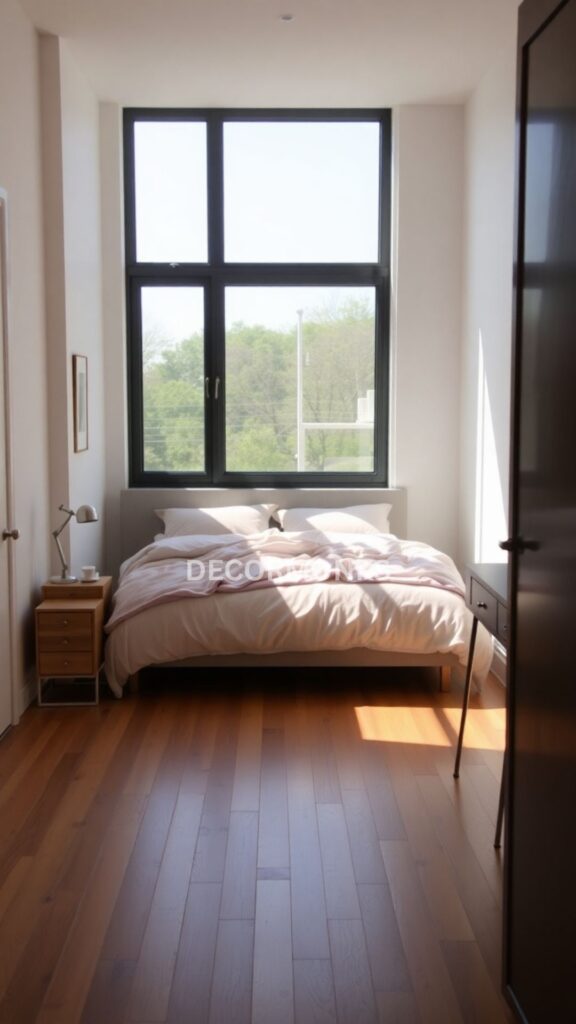
In small rooms, where you place your bed can significantly impact how spacious or cramped the room feels. Instead of the traditional center-of-the-wall layout, consider pushing the bed into a corner. This instantly opens up more walking space and can create a cozy, tucked-in vibe that works especially well in smaller layouts.
If you’re working with an odd-shaped room or multiple windows, be flexible about the bed’s orientation. Even placing it diagonally can help balance awkward proportions. Once the bed is in the right spot, it’ll be much easier to plan the rest of the furniture layout in a way that doesn’t feel cluttered.
Keep the Floor Clear
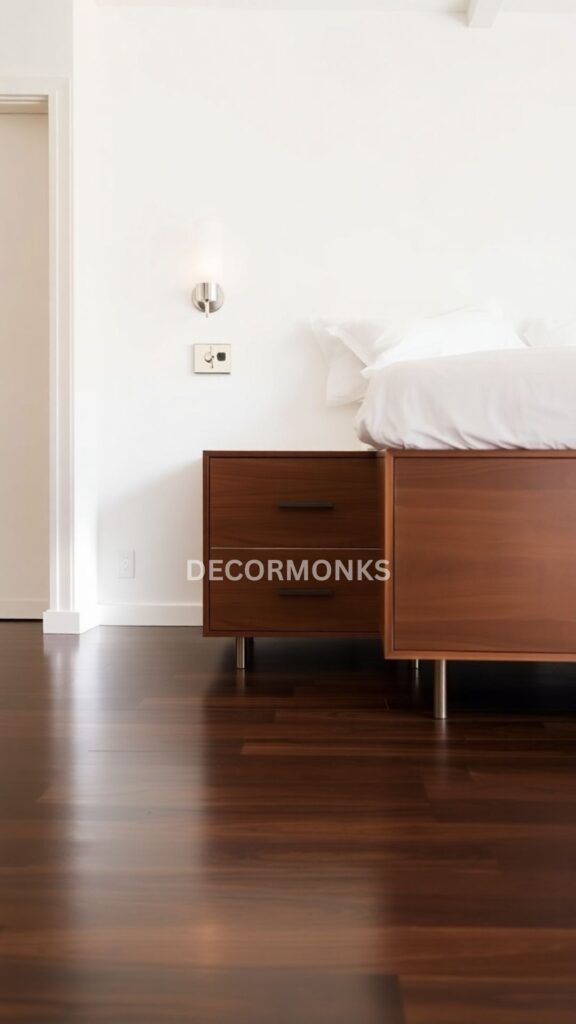
A cluttered floor instantly shrinks a room. That’s why it’s important to keep as much off the ground as possible. Choose furniture with legs instead of solid bases so you can see more floor space underneath—it creates the illusion of openness. Even small things like cords, bags, or shoes can quickly make a room feel chaotic if left out in the open.
Try adding wall hooks or over-the-door organizers to keep everyday items tidy and off the ground. And if you’re really tight on space, consider eliminating unnecessary furniture altogether. A simple layout with only the essentials feels lighter and more relaxing, which is exactly what a small bedroom should be.
Incorporate Sliding or Pocket Doors

Traditional swinging doors can eat up valuable square footage in a small bedroom. If you’re doing any renovations or updating your layout, consider installing a pocket door or sliding barn-style door. These options save space and also bring a touch of personality to the room.
Even your closet door can be reimagined. A sliding wardrobe or curtain can offer a softer, space-saving alternative to standard doors. You’ll be surprised how much easier it is to move around the room when there’s no door swinging in your way.
Style With Intentional Decor
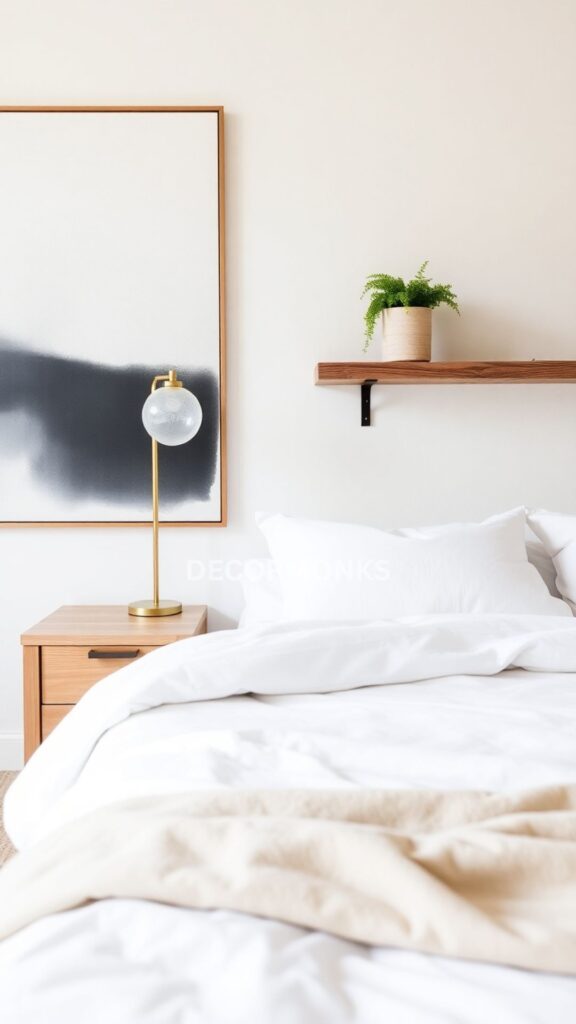
Decorating a small bedroom doesn’t mean giving up on style. It just means you need to be more intentional with your choices. Choose a few statement pieces—a piece of art you love, a textured throw, or a sculptural lamp—and let them shine. Avoid overcrowding your surfaces with too many knick-knacks.
Wall art can add personality without taking up space. A gallery wall of small prints, a large canvas, or even a fabric wall hanging can anchor your space beautifully. Plants are also a great way to bring life into the room, especially if you hang them or place them on a shelf.
Make Use of Every Nook and Cranny
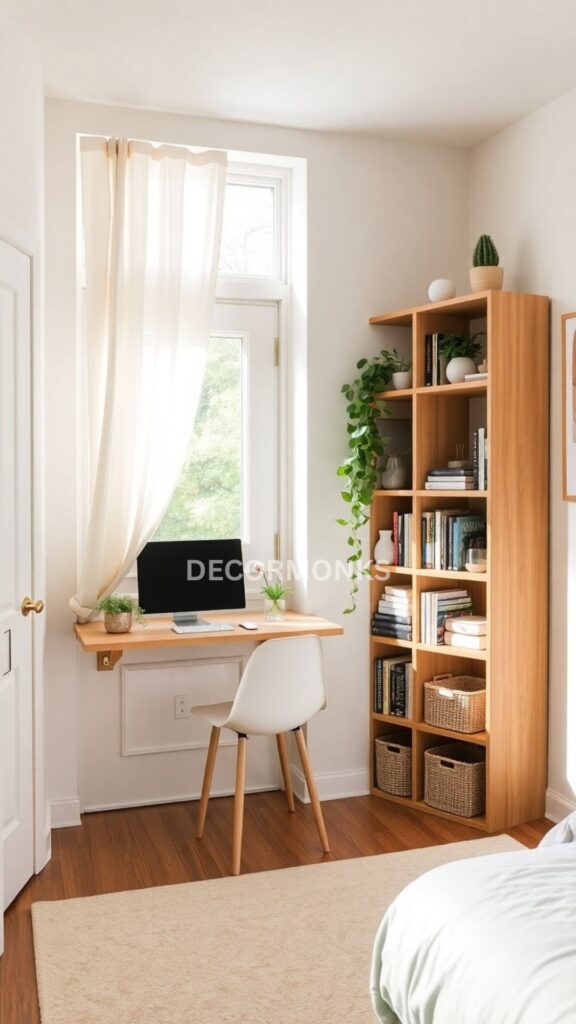
Sometimes, the best space-saving ideas come from working with what you have. A narrow corner can hold a slim bookshelf. The space under your window might be just right for a storage bench. Even the area above your doorframe can become useful with a floating shelf.
Look at your room with fresh eyes and think about areas that aren’t currently being used. With a little creativity, those awkward spots can become some of the most functional and stylish parts of your room. Whether it’s turning an alcove into a mini desk area or adding hooks inside your closet doors, every bit of space can count.
FAQs
How can I make my small bedroom look bigger?
Focus on using light colors, maximizing natural light, and keeping your layout minimal. Mirrors and vertical storage can also help open up the space visually.
What kind of bed is best for a small room?
Beds with built-in storage, loft beds, or platform beds with space underneath are ideal. They give you extra functionality without needing more furniture.
How do I decorate a small bedroom without cluttering it?
Choose decor that’s both beautiful and purposeful. Stick to a simple color palette and use wall space for art or lighting instead of adding more furniture.
Can I fit a desk in a small bedroom?
Yes, look for compact desks, wall-mounted folding desks, or even use a vanity as a dual-purpose space. Position it near a window for natural light if possible.
No matter how small your bedroom might be, there’s always a way to make it feel more spacious, stylish, and personalized. By choosing multifunctional furniture, playing with layout, and maximizing light and vertical space, you can create a room that’s both practical and beautiful. These ideas aren’t about downsizing your dreams—they’re about upgrading your space to suit your lifestyle. Start with one tip, experiment, and watch your small room transform into something big on charm and comfort

